ASD students’ needs - Module 2
2. CLASSROOM. THE REASON FOR THE ORGANIZATION
2.1. Classroom structuring
To design the structured environment, we must have the TEACCH method (Treatment and Education of Autistic and Related Communication Handicapped Children), whose purpose is to achieve the maximum degree of autonomy of the students. With this method, what is intended is: to physically structure the classroom, organize work systems, work with the use of agendas and provide as much visual information as possible.
The objectives are:
- Help them understand situations and expectations.
- Help them to be calm.
- Help them learn better using the visual channel.
- Endow with independence.
- Reduce behaviour problems
2.1.1 Physical structure of the classroom
For the physical structuring of the classroom, the needs or learning styles of each student with ASD must be observed. Depending on where the furniture is located, it can affect the ability of students to function in the environment and act independently. An adequate organization is clear and accessible for students with ASD if the classroom layout is correct since the presence of distractions can be reduced.
To organize the classroom we must take into account a series of premises: the classroom must be divided into specific areas or corners: reading corner, individual work corner, computer corner, etc.; the corners should be visually highlighted, generating
spaces with clear limits; the classroom has to be adapted to the needs and cognitive and emotional characteristics of the students and; It is important to use adapted materials that indicate what to do, when an activity is finished or where the material
is kept.
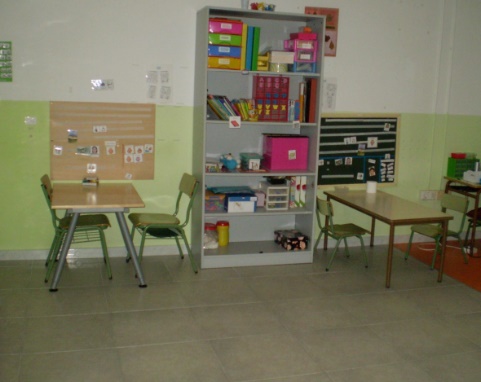 |
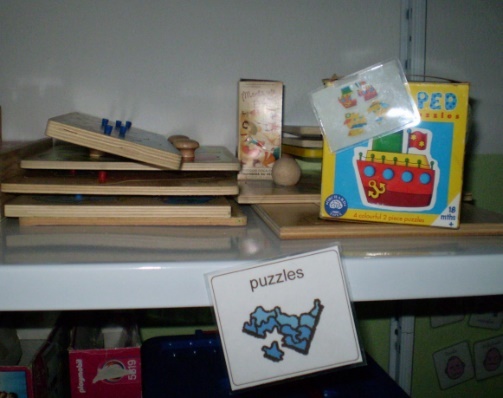 |
|---|---|
| Organized environment structure | Visual information |
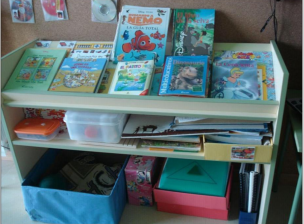 |
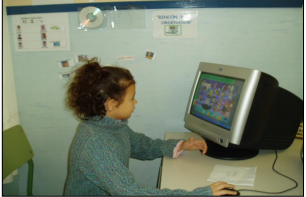 |
| Reading corner | Computer corner |
In relation to the location of the student to the teacher, it must be decided based on the student's needs:
- Face to face. It is the strictest situation from a social point of view, constantly requiring attention and responding to another person.
- Next to each other. It facilitates imitation, the attention is not only focused on the teacher, but on the materials and instructions.
- Behind. Much more emphasis is placed on independence and focus on activities.
2.1.2 Agendas
Daily agendas offer students a lot of clarity and predictability in their day-to-day life since they know what they have to do at all times. Apart from them, they have the opportunity to move around the classrooms and centres in a more autonomous way.
They offer them visual information about: where they are going to be, what activities they are going to do and in what order.
There are many types of agendas:
- Transition object
- Sequence of objects
- Unique photo / drawing
- Photo sequence for part of the day
- Sequence of drawings
- Written list
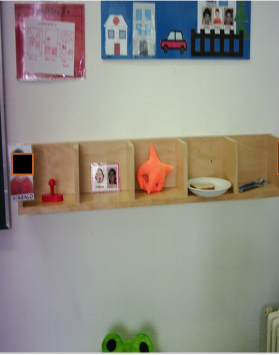
 |
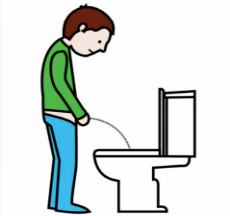 | |
|---|---|---|
| 1 | 2 | 3 |
 |
 |  |
| 4 | 5 | 6 |
2.1.3 Work systems
Work systems help them organize each of the activities that they have to carry out throughout the day and, they are very important to work without the constant supervision of an adult. The information that must be given to students when carrying out a work is:
- The work to be done.
- Certain organized ways to carry out the task.
- The number of tasks or activities and when they have to be completed.
- Self-evaluation by the student so that he is aware of when he is progressing.
- Self-knowledge of the end of the activity.
- Prevent what will happen at the end of the activity.
The purpose of work systems is to organize activities and provide meaningful and organized ways to perform specific activities. We find three types:
- From left to right, with “finished” container
- Pairing (colours, shapes, letters, etc.)
- Writings.
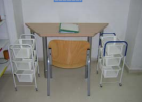 |
 |
 |
|---|---|---|
| 1 | 2 | 3 |
2.1.4 Visual information
Each task that they carry out has to be clearly structured and must be very visual to increase understanding. There are three components to consider:
- Visual clarity. This clarity can be achieved through:
- Specifying the components of a task
- Highlighting the relevant aspects of the tasks through: labels, highlighters, etc.
- Visual organization, through:
- The distribution and stability of the materials used to perform the tasks.
- Divide tasks into simpler parts.
- Visual instructions. Visual aids to understand what to do.